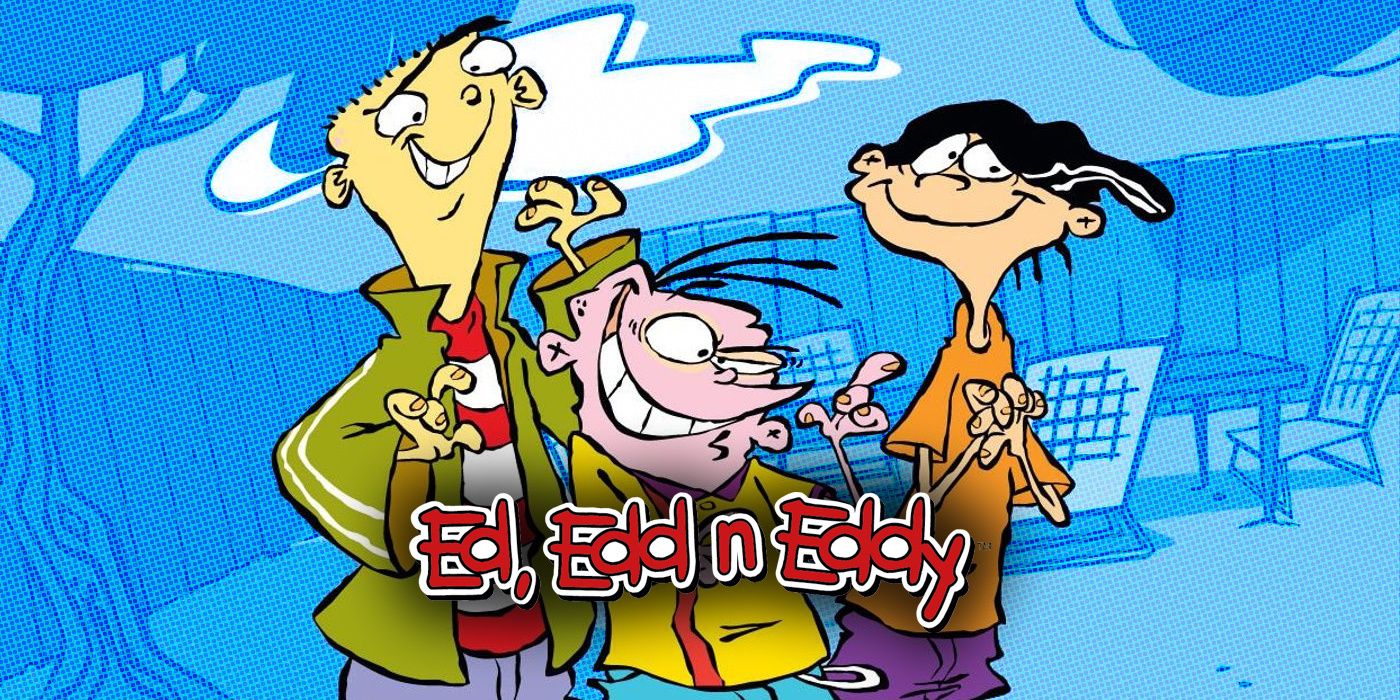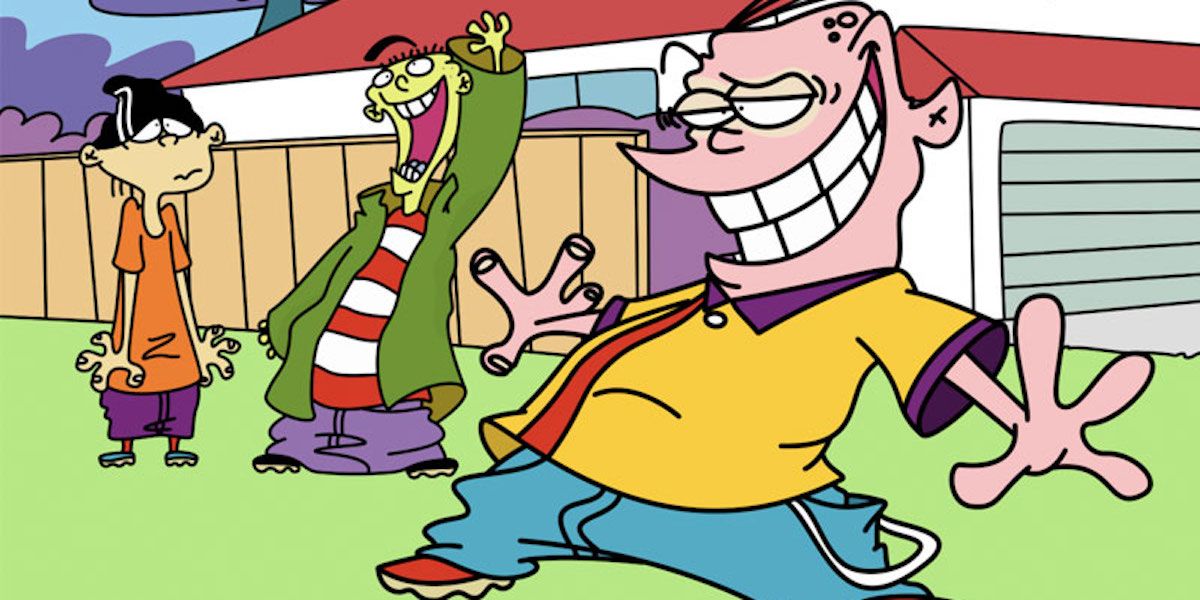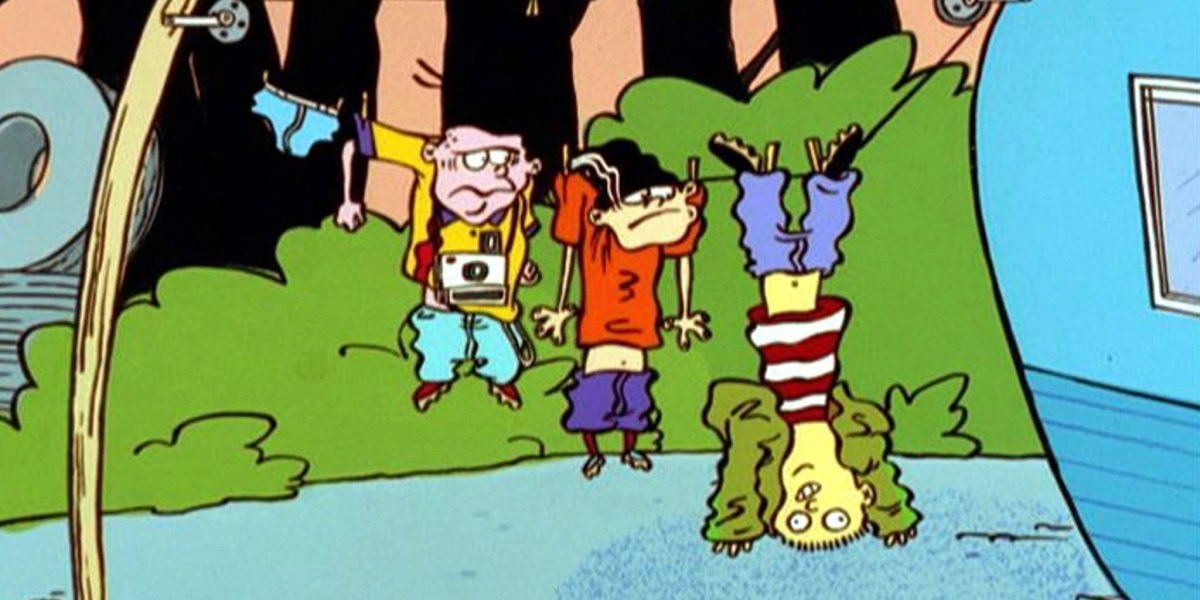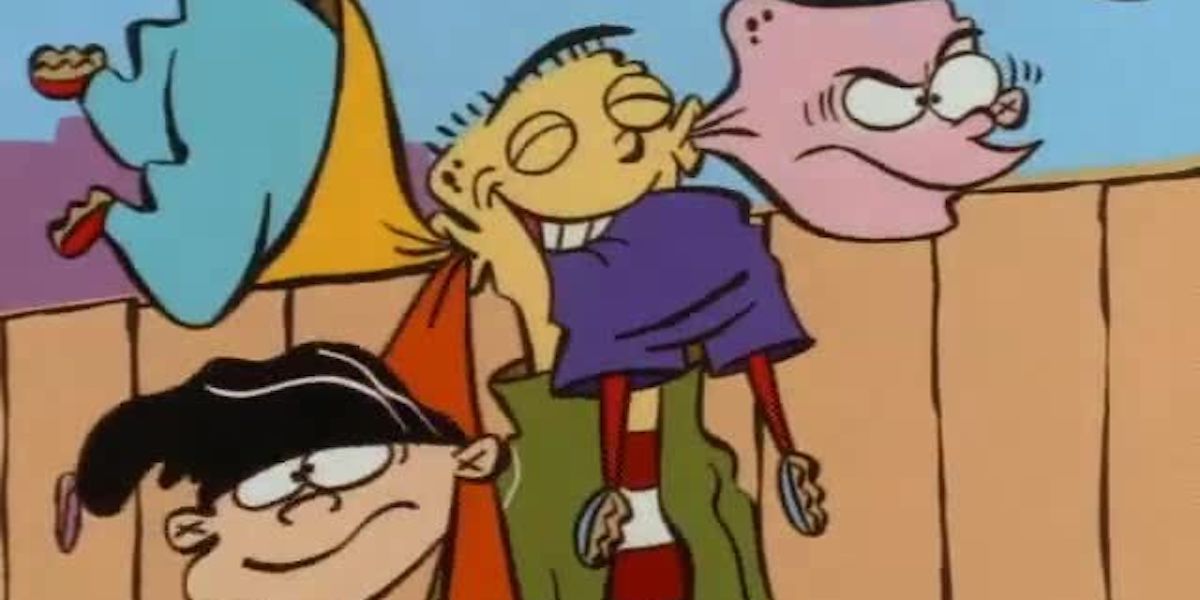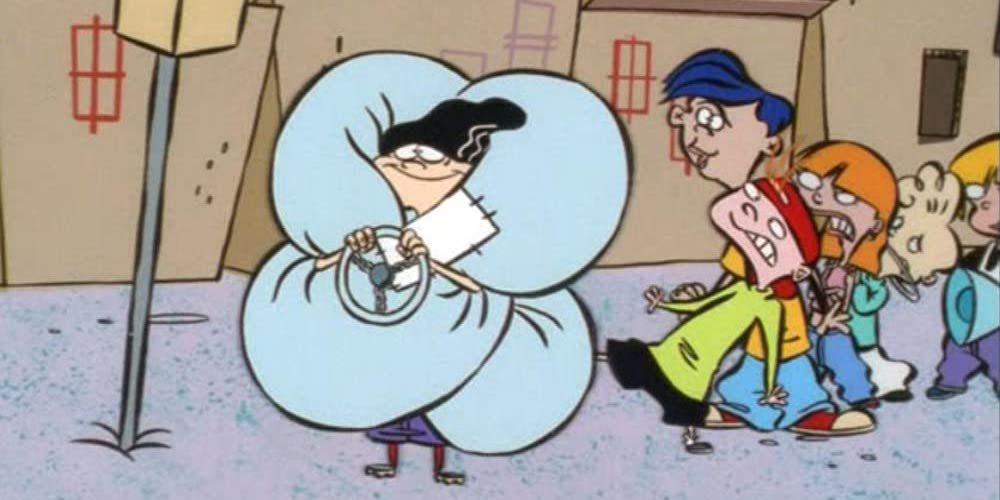I imagine it’s still a surprise to Danny Antonucci that, having made a name for himself with adult-oriented cult projects like Lupo the Butcher and MTV’s The Brothers Grunt, he holds the record for the longest-running series from Cartoon Network’s family friendly Cartoon Cartoon banner. It’s probably still a surprise, too, that the same series marks the end of an era in the history of animation. The show in question is Ed, Edd n’ Eddy. Many a friend and peer has named this their favorite of the Cartoon Cartoons, and it topped Collider’s ranking of the series from that block. I don’t know that I rated it quite so high as a kid, but it was among my favorites. Part of that enjoyment, I must confess, came from a child’s sadistic glee at watching a show his parents found obnoxious. But even at that age, I wasn’t prepared to stick with a show unless I liked it on its merits.
Ed, Edd n’ Eddy was an odd duck among its peers. It was the first Cartoon Network original program, Cartoon Cartoon or otherwise, not produced in-house by Hanna-Barbera. And on paper, it seems rather tame compared to what was airing alongside it. The other Cartoon Cartoons were…well, cartoony, down to their very concepts: boy genius with hidden laboratory, a talking cow and chicken up against a naked red guy, scientifically engineered superpowered schoolgirls – even Johnny Bravo was predicated on its sexist slab of machismo meeting talking animals and 70s celebrities, a pretty cartoony notion. The premise of Ed, Edd n’ Eddy? Kids living in a cul-de-sac on summer vacation trying to get money for candy. It’s a pleasant piece of nostalgia, the stuff of memoirs and flashbacks, but not something that screams to be done through the medium of animation.
It wasn’t quite that simple, of course. The titular Eds, best friends by dint of sharing a name and being social outcasts, do spend many an episode trying to raise cash to buy jawbreakers. This means trying to scam the other neighborhood kids via rides, games, exhibits, contests, vehicles, and cons MacGyvered out of junkyard items. Kids can get up into such hijinks in real life even in the digital age, but when the scams include rocket cars, roller coasters, and Egyptian tombs, you know you’ve entered the realm of cartoons. The personalities of the Eds were also caricatured to increasingly wild degrees as the series went on. The dumb, affable brute that was Ed became the naïve, non sequitur-spewing encyclopedia of comic books and monster movies, possessed of strength beyond all laws of physics. Edd (known as Double D) went from the neurotic inventor of the trio to a polite, fastidious, morally upright Renaissance Ed. Eddy evolved from a take-charge, loudmouthed scam artist to a take-charge, loudmouthed scam artist with a psychotic temper. And that’s not even getting into a cast of neighborhood kids populated by a bald kid who talks to a plank of wood, three sisters who bully through romance, and a first-generation farm kid of indeterminate European origin.
These characters were set apart visually through unique walk cycles, impossible hairdos (and hair colors), and multicolored tongues. But the unique aspect of Ed, Edd n’ Eddy’s design was the character outlines. The “boiling lines,” as Antonucci described them, were achieved through multiple passes at tracing the drawing in ink. “The reason we used that boiling line is so that the show literally stood out from the other shows on Cartoon Network,” Antonucci explained. “You notice that a lot of the shows [had] a lot of the straight, forward lines, which is very cool and very traditional [for] cartoons, but…I was kind of bored with all that clean, nice-looking kind of stuff.” In another interview, he called the lines “a jab against CGI!” (A man after my own heart). “The wobble effect reflects back on the cartoons of the 30s when everything was black and white and hand inked.”
And hand painted. After being inked on clear cels, the drawings were flipped over and painted in before being photographed over backgrounds. This was standard practice in animation from before the sound era to the 1980s. At that point, technology allowed for digital ink and paint applied directly to scanned drawings, and this became the norm for animated features starting with the 90s. The system was slower in coming to television. At the start of the Cartoon Cartoon program, every series was still using cels; Ed, Edd n’ Eddy wasn’t unique in this regard. As the 90s wrapped up and the millennium turned, however, the hand painted club saw dwindling membership. Dexter’s Laboratory and Johnny Bravo switched to digital ink and paint, and new Cartoon Cartoons like Courage the Cowardly Dog started out that way. The same story played out across all networks, whether shows dove into the deep end with a clean switch or slowly transitioned. Digital ink and paint was just too efficient and economical to resist, and less removed from the animators’ original drawings. But as their peers moved on, Antonucci and the Eds stuck with the tried and true for coloring animation that became ever more expressive and elastic as the show went on.
The Season 4 finale, “Take This Ed and Shove It,” was intended as the final episode of the series. The show’s popularity spoke against it ending just then, and it ended up renewed for two more seasons, though Season 6 would only get one episode before being shelved in favor of a TV movie. The last two seasons saw a major shift in the setting of the series. Summer vacation ended, sending the kids back to Peach Creek Junior High. Fall and winter weather necessitated tweaks to each character’s wardrobe. But the biggest visual change came in the color. When Ed, Edd n’ Eddy returned to the air for Season 5, it was with digital ink and paint. It was the last major animated production in the West to make the switch.
The production shift and the new setting only happened to coincide. Nevertheless, they mark off the tail end of the series from everything that came before. By this stage, all the characters had reached the point of Flanderization, that notorious process where a single character trait balloons until it takes over everything else. Paired with wackier, looser animation, this didn’t necessarily hurt most of the cast. In some cases, namely Nazz, the crush of all the neighborhood boys, it supplied personality where little to none had been before. The dynamic between certain characters improved as well, as their likes, dislikes, virtues, and vices became clearer. On the other hand, it was awkward to send such a small cast to school and never see any other kids at big events like football games or school dances. And Eddy’s rage and selfishness reached such bewildering highs in the show’s late days that it became very difficult to accept his and Double D’s being friends (while Double D’s increasing saintliness made it hard to believe the other kids wouldn’t like him). I’m afraid I don’t find the finale of Ed, Edd n’ Eddy’s Big Picture Show, the TV movie/series finale, a satisfying apologia for Eddy. I don’t find it much of a finale either.
The merits outweigh these drawbacks in the later seasons, though. I can’t emphasize enough how alive the animation became in these seasons. There is some astounding drawing on display here, employed to outrageous cartoony effect. And if the Eds conceded to the march of time on their paint job, nothing else about the production changed. Antonucci still insisted that the show was “handmade, hand-done, hand everything throughout the whole system” right until the end.

